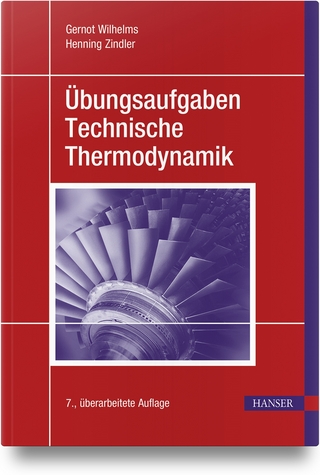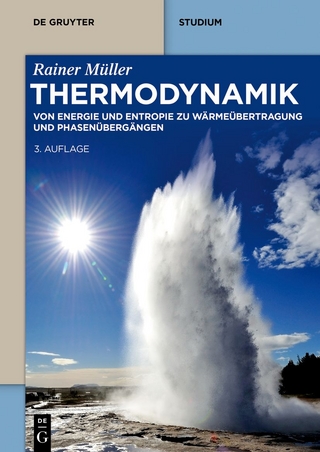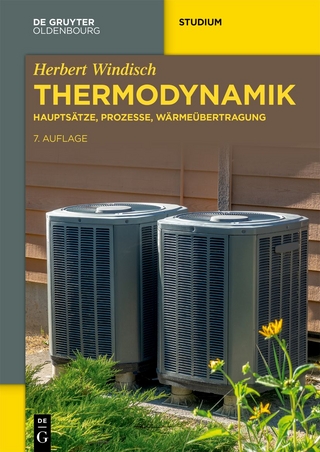
Carbon Capture and Storage
Woodhead Publishing (Verlag)
978-0-323-99702-7 (ISBN)
- Noch nicht erschienen (ca. Juli 2025)
- Versandkostenfrei innerhalb Deutschlands
- Auch auf Rechnung
- Verfügbarkeit in der Filiale vor Ort prüfen
- Artikel merken
This book will guide students and researchers through the latest research on CCS enabling them to identify new research topics to advance the field further. Professionals responsible for implementing advanced CCS to help reach climate goals will use this book as a guide to inform their activity and they will gain invaluable insight from lessons learned and best practices included.
Simon is Research Scientist at SINTEF Energy Research and has more than 10 years of experience in Carbon Capture and Storage (CCS). In addition to his position at SINTEF, he has also worked at the Economic studies department at IFPEN (France) and has been a visiting researcher at Carnegie Mellon University in the Engineering and Public Policy department. His areas of expertise include techno-economic analysis, value chain analysis, and optimization of CCS and hydrogen. He has authored more than 45 scientific publications, and has been project leader and sub-project leader for multiple Norwegian and international projects. Simon has a M.Sc in Chemical Engineering from ENSIC (Nancy, France) and an M.Sc in Energy Economics Engineering from IFP School (Rueil-Malmaison, France). Rahul is a Research Scientist at SINTEF Energy Research. He has worked in CCS, H2 production from NG for over 15 years apart from experience in energy efficiency improvement and debottlenecking in refineries (over 4 years) and design and commissioning of NPK fertilizer plants (around 3 years). Rahul’s expertise is on systematic design, integration and optimization of separation and fuel conversion processes. He has extensively worked on integrating and benchmarking CO2 capture technologies in different industrial and power plants. He has led multiple industrial projects in addition to being project leader and sub-project leader of multiple Norwegian and international projects. Rahul Anantharaman has a PhD in Energy and Process Engineering from Norwegian University of Science and Technology (NTNU).
Section 1: Introduction
1. An introduction to CCS
2. The role of CCS in reducing global GHG emissions
Section 2: CO2 capture processes
3. Absorption
4. Membrane
5. Adsorption
6. Low-temperature
7. Oxy-combustion
8. Chemical looping
9. Hybrid processes
Section 3: Applications
10. Power
11. Industry
12. Hydrogen
13. Maritime and offshore
14. CCS pathways to negative emissions (includes waste-to-energy, bioenergy with CCS, direct air capture)
Section 4: CO2 transport and StorageCO2 transport and Storage are key element of ensuring permanent storage of captured
15. CO2 Transport
16. CO2 storage
Section 5: Transversal aspect, for CCS chains
17. Thermodynamics for CCS
18. Cost of CCS
19. CO2 markets and financing CCS
20. Environmental aspects
21. Legal aspects
Section 6: Perspectives and emerging CCS topics
22. Synergistic process and material synthesis approaches for CO2 capture
23. Environment perspective for material development
24. Moving technologies toward commercial implementation
25. Negative emissions in industry
26. Removal of non-CO2 component from air
27. Big data and digitalization for CCS
Section 7: The way forward for CCS
28. Regional perspective on the way forward for CCS and Policies
| Erscheint lt. Verlag | 1.7.2025 |
|---|---|
| Sprache | englisch |
| Maße | 152 x 229 mm |
| Themenwelt | Naturwissenschaften ► Physik / Astronomie ► Thermodynamik |
| Technik ► Umwelttechnik / Biotechnologie | |
| ISBN-10 | 0-323-99702-3 / 0323997023 |
| ISBN-13 | 978-0-323-99702-7 / 9780323997027 |
| Zustand | Neuware |
| Informationen gemäß Produktsicherheitsverordnung (GPSR) | |
| Haben Sie eine Frage zum Produkt? |
aus dem Bereich


